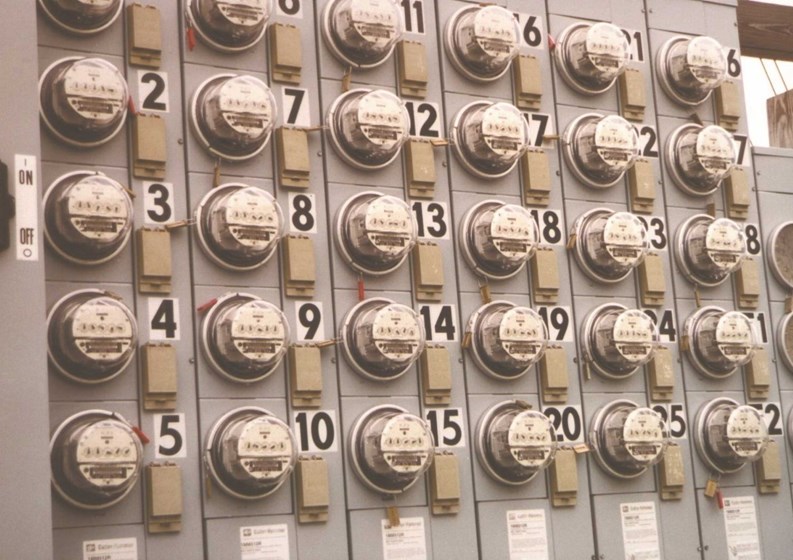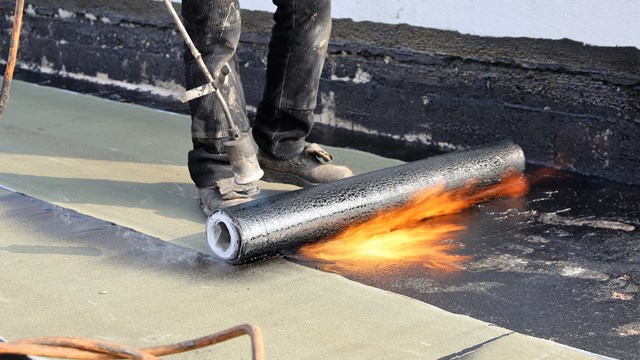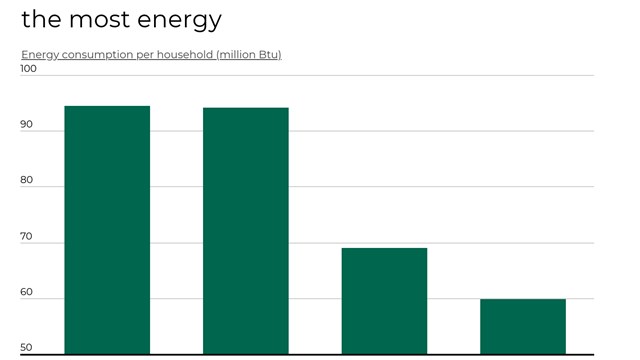Utility submetering is the implementation of a system that allows a condominium association or other multi-tenant property to bill tenants for individual measured utility usage by making use of individual water, gas, or electricity meters for their relevant utilities.
Submetering provides an opportunity for building owners to shift their rising electricity costs to tenants who lack ownership or control over thermal efficiency of the structure, its insulation, windows and major energy-consuming appliances.
Todd C. Quarterman, president of Rochester, N.Y.-based WaterWatch Corporation, says that many condominium communities built or converted prior to 1980 use master meters because they did not submeter the utilities, especially their water.
“In many cases, the HOA is bundling the utility costs into the monthly association fee so homeowners are not required to conserve their usage,” Quarterman says. “Once utilities are submetered and the homeowner is held accountable for their usage, they will conserve. With water submetering, total consumption will decrease around 20 to 25% once submeters are installed.”
Since the homeowners represent the community association, energy costs will also decrease making it a win-win for both the homeowner and the association.
Making the Leap
New Jersey just became the 50th state to allow renter households to pay only for their own usage of utilities, rather than all of the households in a building absorbing the entire burden, regardless of consumption. The passage of new regulations came about as a result of a push by the New Jersey Apartment Association (NJAA) to adopt a more energy-efficient stance in multifamily properties. Gov. Chris Christie also has adopted a more pro-environmental position seeking to implement solar and renewable energy solutions statewide.
The New Jersey Board of Public Utilities recently approved the NJAA’s petition for approval of water submetering in newly constructed multifamily properties. New Jersey’s new submetering provision is limited to water-related usage, which is expected to be reduced by 15% or more in submetered buildings, following the experience of other states studied by the US Environmental Protection Agency (EPA).
“Approval of submetering by the Board of Public Utilities is a win for renters, a win for property owners, and a win for the environment,” said Jean Maddalon, executive director of the NJAA. “Education is key to any efforts to conserve our natural resources, and with sub-metering we can help educate residents on their personal water usage habits. Better knowledge of personal usage habits leads to better personal decision making and advances conservation.”
“When you can measure a resident’s personal consumption, you can educate,” stated Connor Fennessy, NJAA’s vice president of government affairs. NJAA is aiming for “conservation through education,” he adds.
Many factors go into choosing a submetering system, including size of the property, construction materials, and topography. There are numerous vendors in the New Jersey and the tri-state market ready to help slash utility costs.
Ron Burke, Certified Energy Manager (CEM), and principal of New England-based energy and utilities metering company Meter Engineering Co., LLC, began installing submetering systems in condos about seven years ago. According to Burke, residential property owners can lower operating costs and shift the risk of future utility cost increases using proven wireless submetering and utility allocation systems.
By using the company’s proprietary submetering systems, a condo will have access to the latest generation of wireless technology for new or retrofit applications that integrates with electric, gas and water meters. “Centralized data collection and billing software is scalable for up to 2,000 units and optional heat and cool wireless transmitters integrate directly with standard HVAC equipment,” Burke says.
Thomas K. McHugh, president of Pennsylvania-based Monitor Data Corporation, explains that his company’s Energy Cost Allocation system is a digital electronic temperature measurement and data recording system ideally suited for gas or oil-fired “shared boiler” heating systems, hot water baseboard, convector and fan coil systems, cast iron radiators, liquid source heat pumps, and individual hot air or warm air furnaces. The system, currently used in 30,000 condo units each month, utilizes real-time monitoring and testing features so the company can have true two-way communication to the heating and cooling system temperature sensor in each individual unit.
“Submetering is really the human side of energy conservation. If people have to pay for what they use, they will use less,” McHugh says. “There are some very significant savings when submetering comes into play. Electricity, they will use about 15% less on average; water, close to 30%; and heat, approximately 20%.”
The Good, the Bad, the Submeters
According to a study done by professional engineer and independent energy consultant Herbert E. Hirschfeld on condos, 20% to 25% of total usage is consumed by just 10% of all people. His research has shown that residents will conserve utilities when they are directly responsible for the cost of the utilities consumed within their residence.
Once submeters are installed, however, individual homeowners become more accountable for their usage only and are quick to fix leaks in faucets, close windows during heating season and keep their air conditioning shut off when they are not home.
“People are much more conscious of how they use energy, heat or water so the overall cost will go down by 20% and that’s good for everybody,” Burke says. “Residents will only pay for heating and cooling when they are there, and they will be much more aware of what they are doing, thereby reducing overall energy.”
It’s been proven that customer behavior is inversely related to the price of a product and customers do respond better to having a bill in their hand. Plus, if there’s a dispute over a bill, submetering makes it very easy for someone to see how they are using their energy or water.
“They may not believe they used X-amount but with the software I use, I can do an audit and show exactly when they had their heating and cooling down to a hundredth of a second,” Burke says. “It does become a headache for some management companies, though, with people wanting to know all the time.”
Direct metering allows for people to choose where they get their electricity from, and that is true with a condo association as well, since it allows for greater negotiating power. “They might decide they can get a better price if they go through a third party, and that’s a reason for submetering,” McHugh says. “By buying in bulk as a condo association they can negotiate the best possible price for any given utility and pass those savings along to the condo owners.”
Objections for submetering might come from seniors, who routinely keep their homes warmer because of health reasons, or those who live in a building where a number of people head off to a second home in the winter.
“During months that only a few people are using the utility, they can end up paying a very large share of it. If you have 100 apartments and only 10 people are using it regularly, they will pay the entire bill,” Quarterman says. “In a small load like that it can be very inefficient and that could cause strife.”
Plus, heat rises so those living on the ground floor are going to require more heat and question whether it’s fair that they have to pay more.
In Demand
Wireless metering is in vogue, as it saves money on the cost of infrastructure and makes it easier to collect the data.
“You see it a lot, especially in high-end condos that are already finished off, because they don’t want you poking holes through walls and everything else,” Burke says.
A simple installation for a water submetering system monitored by a wireless network is $220 per unit. Other energy installations cost roughly in the $200-$400 price range per individual unit.
Energy management services such as master bill validation and processing along with submetering services offers communities further energy savings.
“Clearly there is value of having a green building,” says Ed Davis, manager of Pricing Strategy and Administration with Northeast Utilities. “Energy efficiency supports green initiatives of an association. Submeters can also offer a lot of good information within the facility among common use and individual units.”
The U.S. Department of Energy offers access to a wide range of state incentives that can be applied to utility submetering through their Database of State Incentives for Renewables and Efficiency (DSIRE) program. Submetering a property can now also provide credits towards the Water Efficiency and Energy and Atmosphere categories of LEED certification.
Making the Change
To add submetering to an existing condo is not easy. Since the unit owners are controlling it, the bylaws are already established, so an amendment to those bylaws would be needed to allow submetering.
“Condos are particularly difficult customers because they do have these bylaws or rules set up where you need two-thirds of the people to say ‘yes’ to something before it can be amended,” McHugh says. “When we go in to a condo meeting in front of the owners and say that 60% of the people will benefit from this because they will end up paying less, how do you get 67% of the people to say, ‘Let’s do it’?”
The most difficult obstacle to overcome when selling a submetering system to a community association is getting everyone to agree.
“If you are the homeowner with a family of five, you just might rather keep the current utility payment allocation method bundled inside the association fee,” Quarterman says. “Once the utility is submetered, your bill is likely to increase, while the single homeowner’s is likely to decrease.”
That very fact was played out two years ago when residents at Hoboken’s Marineview Plaza housing development objected to a pilot submetering program and got it suspended because they believed they were being overcharged and that the meters weren’t working properly. Officials said that residents were perhaps just using too much energy.
It’s far easier to get submetering into a new condo development, and most will go that route.
“If you are pitching a developer who is developing a condo or converting over, you pitch them on the idea that the design mechanical system is less costly,” Burke says. “Use that saleable idea that people buying the units are only paying for energy they use. They can view that as a sales advantage because that’s an attractive thing to many people.”
Keith Loria is a freelance writer and a regular contributor to The New Jersey Cooperator.







2 Comments
Leave a Comment